| Type | Standard / Implementation Specification | Standards Process Maturity | Implementation Maturity | Adoption Level | Federally required | Cost | Test Tool Availability |
|---|---|---|---|---|---|---|---|
|
Standard
|
Final
|
Production
|
Yes
|
Free
|
N/A
|
||
|
Standard
|
Final
|
Production
|
Feedback Requested |
No
|
Free
|
||
|
Emerging Standard
|
Final
|
Production
|
Feedback Requested |
No
|
Free
|
No
|
| Limitations, Dependencies, and Preconditions for Consideration |
Applicable Value Set(s) and Starter Set(s)
|
|---|---|
|
Representing Medication: Representing Drug Classes for Allergy and Intolerance documentation:
Representing Adverse Reactions/Intolerances:
|
Comment
Submitted by pwilson@ncpdp.org on
NCPDP Comments
NCPDP supports ONC’s recommendations.
Submitted by rmcclure on
Tighten up the applicable starter sets
The various identified "starter value sets" in this section presents a confusing overlapping collection. The three items listed as "representing drug classes" are not equivalent and only the SNOMED CT (SCT) Product hierarchy is actually aligned with actual drug class concepts. SNOMED CT Drug product class concepts are uniquely valuable because NLM links SCT product class concepts to the appropriate RXNorm drug ingredients to support Drug class to RxNorm or even NDC codes identification via available APIs at RxClass. The other two suggested sets (Common Drug Classes for Allergy and Intolerance documentation and Common Drug Substances for Allergy and Intolerance documentation) do not represent useful drug classes and should not be listed in the Drug Classes for Allergy and Intolerance documentation section.
For the Representing Medication section, the listed set Clinical Drug Ingredient (2.16.840.1.113762.1.4.1010.7) (RxNorm ingredient codes) is a subset of all potential drug ingredient RxNorm codes that was based on a historical review of common drug ingredients listed as causes of allergy or intolerance in clinical records done a number of years ago. While this list has not been updated, it is useful. I suggest adding to the suggestions in this section the set you will remove from the "class" set as it is the list of every ingredient or related code type in RxNorm - over 25,000 codes. This is the Common Drug Substances for Allergy and Intolerance documentation (2.16.840.1.113762.1.4.1186.1) set.
Submitted by pwilson@ncpdp.org on
NCPDP Commnet
NCPDP supports ONC’s recommendations.
Submitted by gldickinson on
Preserving Clinical Context
General Comments:
USCDI specifies lots of clinical data classes and data elements
- Resolving to myriad de-coupled fragments
- With vanishingly little focus on:
- Clinical context and vital inter-relationships, e.g., between problems, diagnoses, complaints, symptoms, encounters, allergies, medications, vaccinations, assessments, clinical decisions, orders, results, diagnostic procedures, interventions, observations, treatments/therapies, referrals, consults, protocols, care plans and status...
- Elements and context + purpose of capture: e.g., blood pressure, its measurement (systolic, diastolic), its unit of measure (mm/Hg), its reason for capture, its context of capture (sampling site, sampling method, patient position, at rest/during/post exercise...
It is crucial to consider and determine/resolve how clinical content and context are bound together and preserved in USCDI. The ultimate end user (often a clinician) must be able to readily discern context and inter-relationships – otherwise USCDI places an undue (and often unresolvable) burden on this user. Only the source EHR/HIT system can structure clinical content and context properly. Once data is stuffed into the USCDI framework and related exchange artifact (e.g., FHIR resources) this opportunity is forever lost.
Submitted by mattreid on
The AMA requests that the…
The AMA requests that the Current Procedural Terminology (CPT) code set be added to the standards listed in Section I: Representing Patient Allergies and Intolerances; Medications. The Allergy and Clinical Immunology CPT codes (95004 – 95199) identify patient assessment and intervention for allergy testing, ingestion challenge testing, and allergen immunotherapy, including medications.
CPT is a comprehensive and regularly curated uniform language that accurately describes medical, surgical, and diagnostic services and provides for reliable communication among users. It has an extremely robust and mature development process with open and transparent meetings and clinical input from national medical specialties and relevant stakeholders. It is the most widely adopted outpatient procedure code set. Use of the CPT code set is federally required under HIPAA.
Submitted by pwilson@ncpdp.org on
NCPDP Comment
- Add the following:
Type-Implementation Specification
Standard Implementation/Specification- NCPDP SCRIPT Standard, Implementation Guide, Version 2017071
Standards Process Maturity – Final
Implementation Maturity- Production
Adoption Level – N/A
Federally Required – No
Cost – $
Test Tool Availability – Yes
Test Tool Link: https://tools.ncpdp.org/erx/#/home
- NCPDP SCRIPT Standard Version 2017071 allows for transmission of all the data sets.
Submitted by shellyspiro on
Pharmacy HIT Collaborative's Comments on ONC's Proposed 2018 ISA
The Pharmacy HIT Collaborative supports using RxNorm and SNOMED CT; however, we ask for clarification as to why MED-RT (formerly NDF-RT) has been removed as a standard/implementation specification, as it was included in the final 2017 ISA and is currently included under “Representing Patient Medications.” We recommend that it be returned.
Submitted by robinsog on
Class Medication Allergen - Suggest SNOMED CT Substance Hierarch
Strong support SNOMED CT as replacement to NDF-RT which is no longer supported. In past modeling, have recommended the "substance" domain in lieu of the listed "product" domain as the "class" substance contains relationships to related medication ingredient substances. For example, current NDF-RT N0000011281 "Penicillins" spans RXCUI 7986 within RxNorm. RXCUI 7986 also spans SNOMED CT 373270004 "Penicillin -class of antibiotic- (substance)," and 6369005 "Penicillin -class of antibiotic- (product)" - the "substance" value has links to the ingredient "children" that would be expected to span the class, such as "amoxicillin". The "product" hierarchy does not have a direct path to member "ingredient" based concepts.. instead, it links to a product concept such as "product containing amoxicillin".
Submitted by andersol on
Consider including MED-RT to represent classes of medications
MED-RT is an emerging standard that allows for representing classes of medications. This has already been added under "Representing Patient Medications". Shouldn't this also be added here for representing allergies to a class of medication?


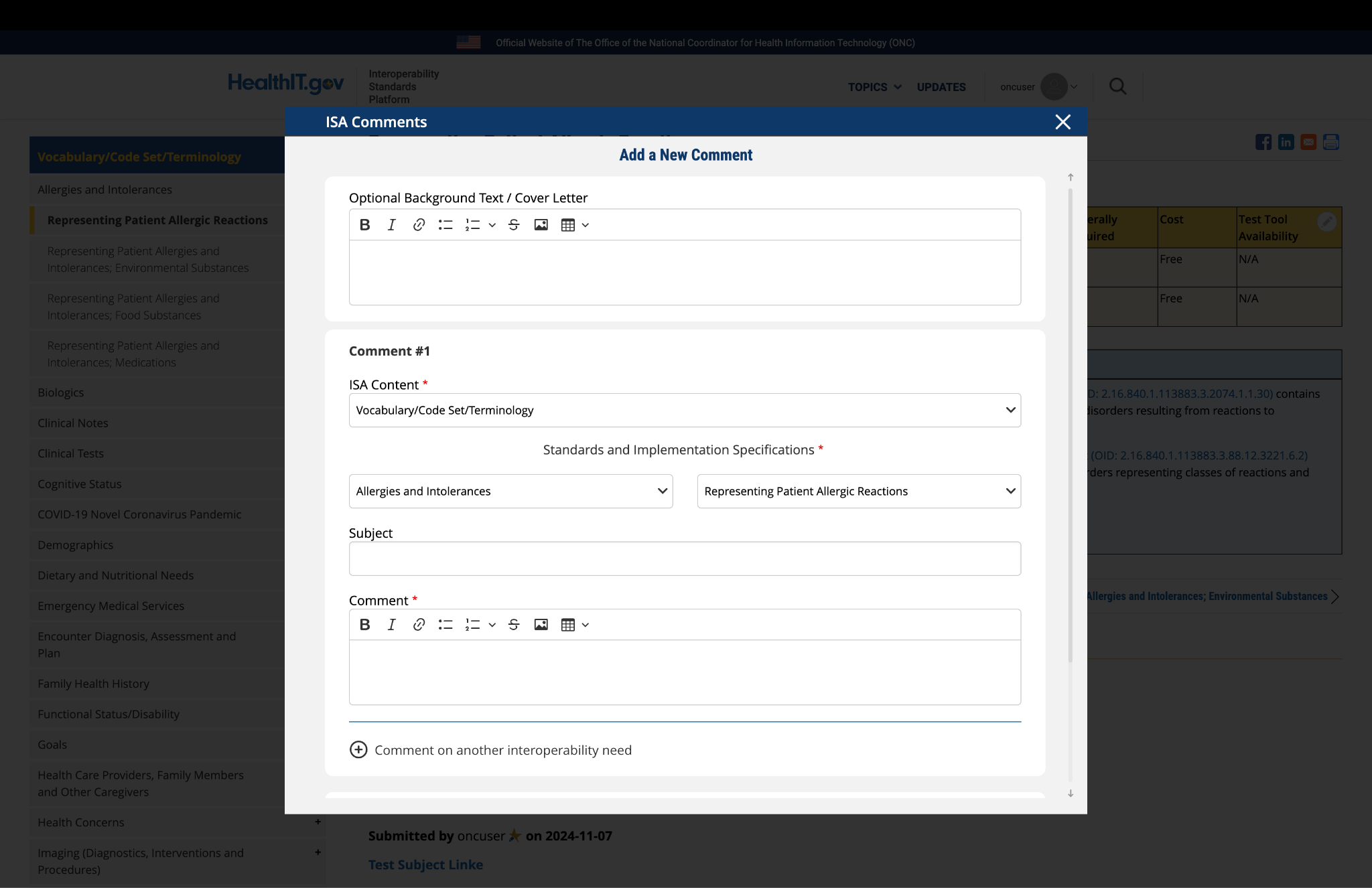

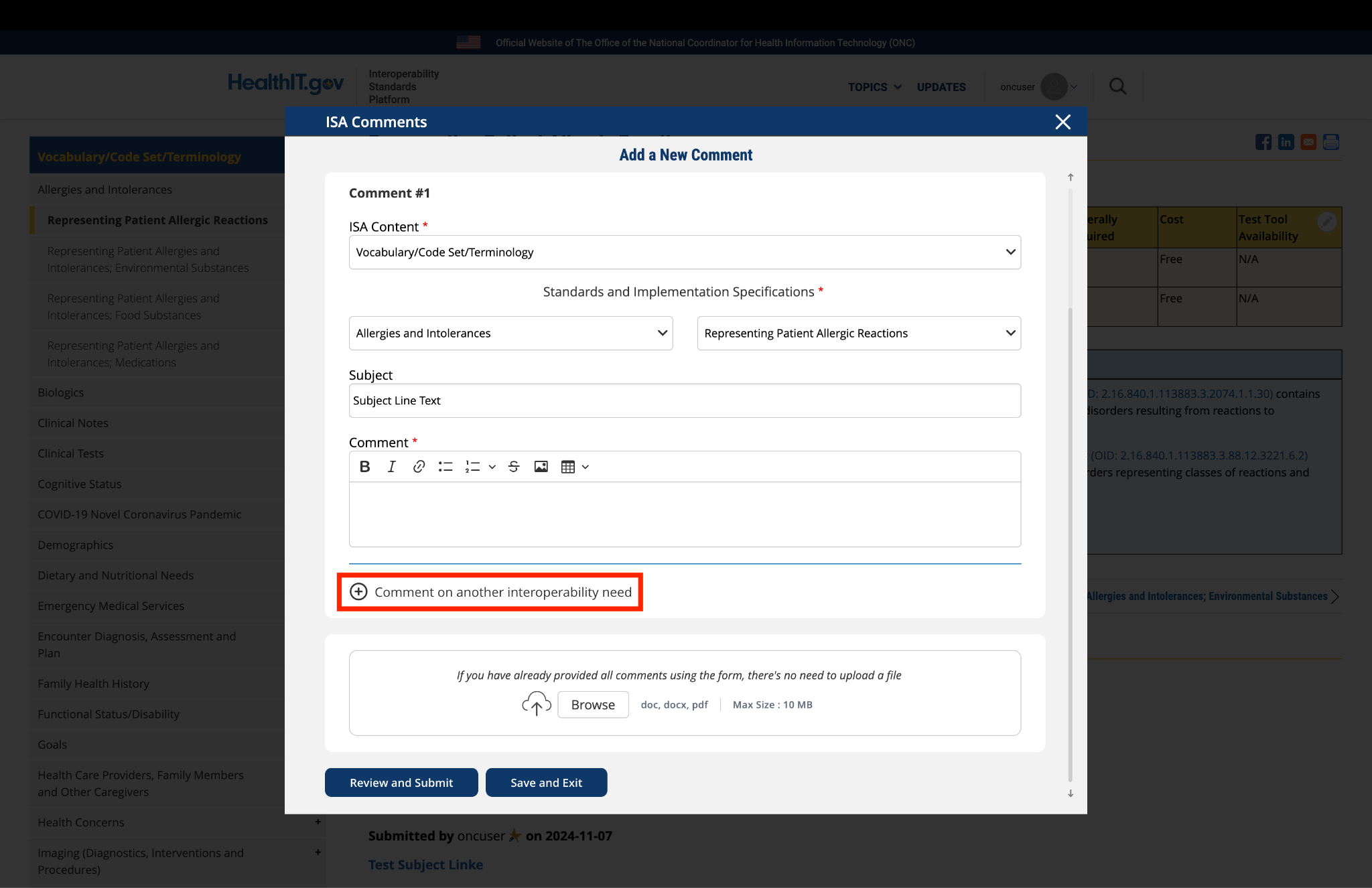
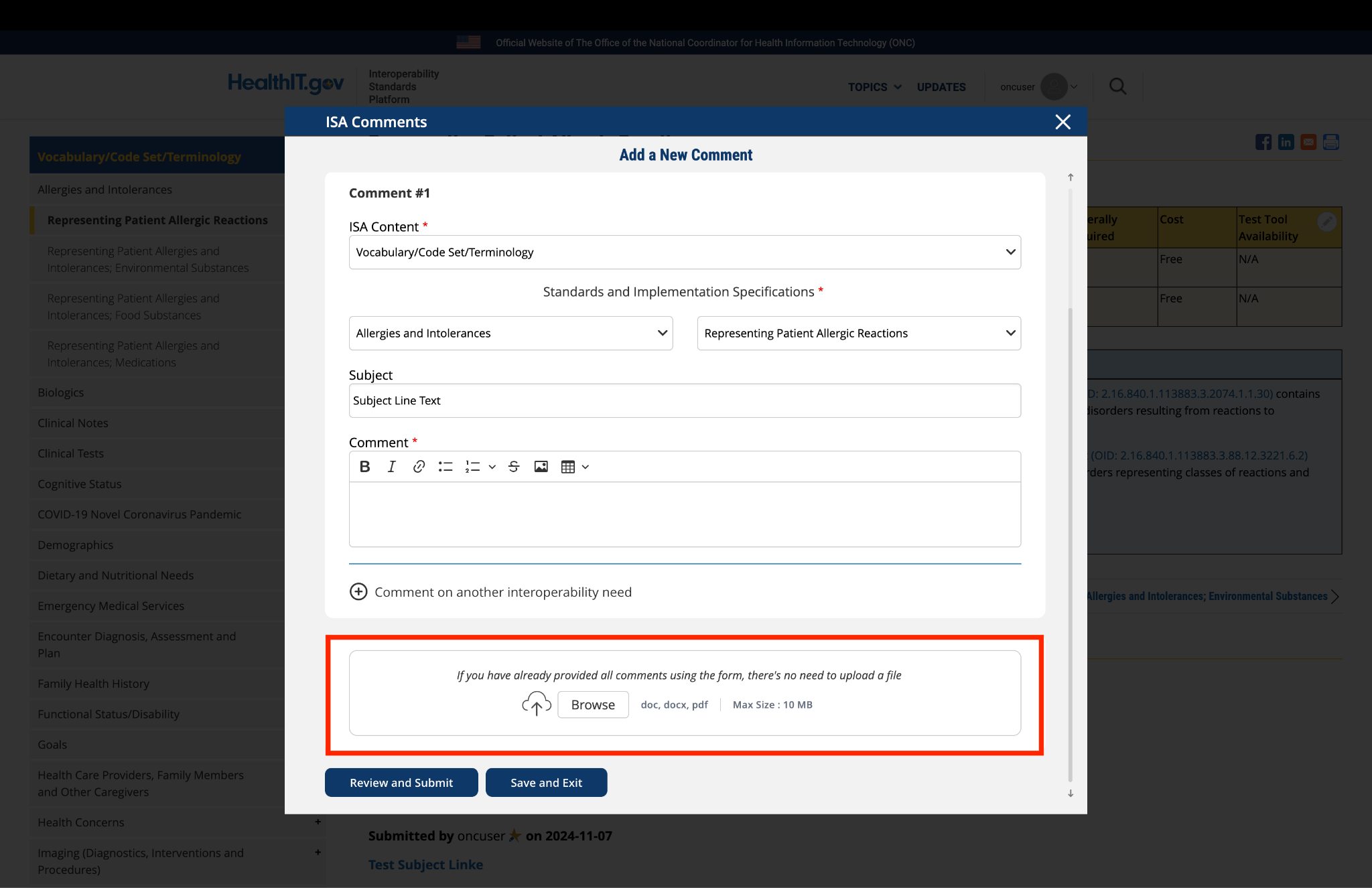
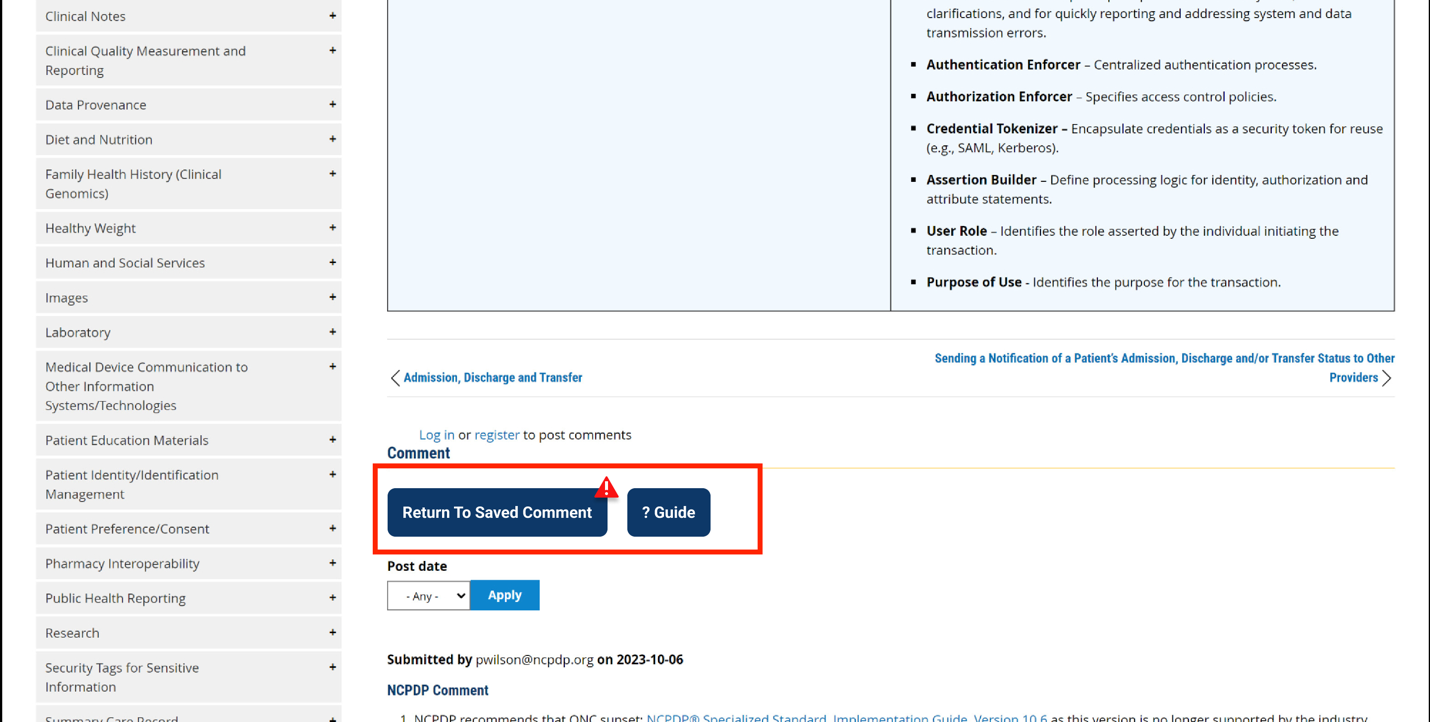
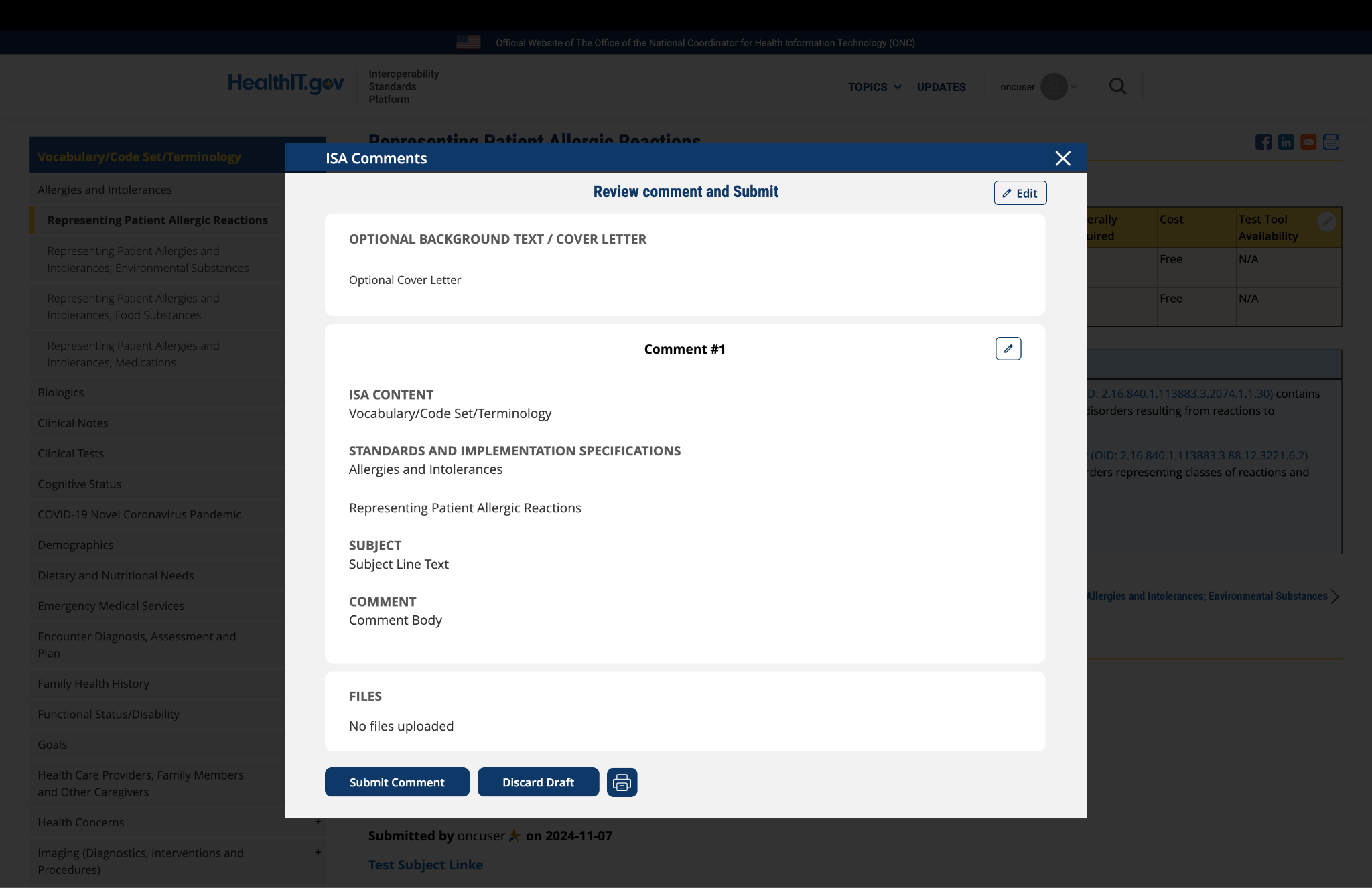
Submitted by pwilson@ncpdp.org on
NCPDP Comments
Type-Standard
Standard/Implementation Specification- National Drug Code (NDC)
Standards Process Maturity – Final
Implementation Maturity- Production
Adoption Level – 5
Federally Required – Yes
Cost – $
Test Tool Availability – N/A